#elizabeth de valois
Photo
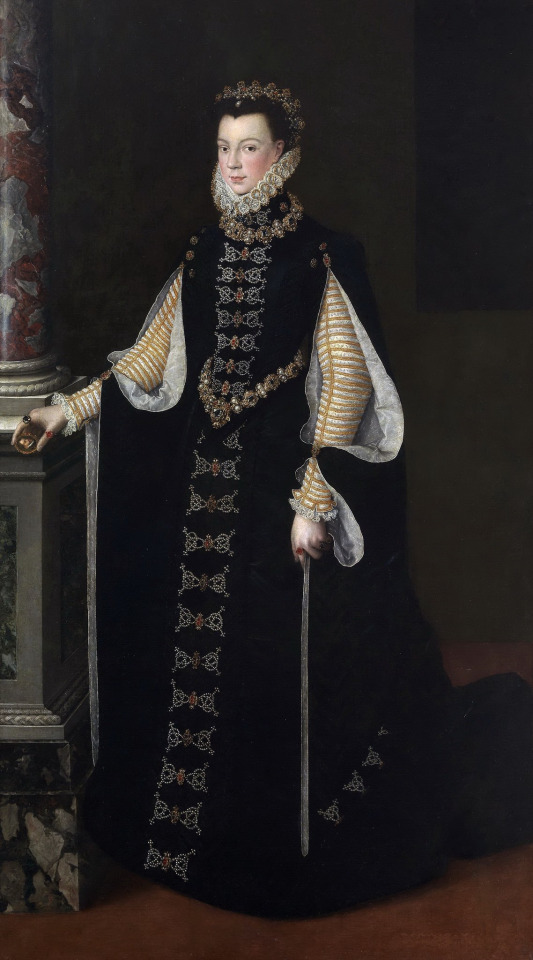
Sofonisba Anguissola (Italian, c.1532-1625)
Elizabeth de Valois (Queen consort of Spain) holding a Portrait of Philip II, 1561-65
Museo del Prado, Madrid
#Sofonisba Anguissola#italy#italian art#1500s#art#elizabeth de valois#fine art#portrait of a lady#fine arts#european art#italian peninsula#western civilization#16th century#woman#brunette#black hair#black eyes#noble#nobility#royal#royalty#Aristocracy#aristocrat#queen#queen of spain#queen consort#queen consort of spain#spain#spanish#spanish history
117 notes
·
View notes
Text
I am going to take part in a major writing competition organized by an independent British publisher, and if I win, I’m going to be offered a five-book contract on novels about the women of the Wars of the Roses (well, except Catherine de Valois for book 1).
Like, yes, the prize is specifically a contract for this specific brief, I’m not hallucinating.
Please, please, wish me luck
Philippa Gregory eat your heart out
@theladyelizabeth @cinemaocd
#writeblr#amwriting#writers of tumblr#writers on tumblr#wip#writeblr community#writing community#writing#wars of the roses#anne neville#margaret of anjou#elizabeth of york#Catherine de Valois
45 notes
·
View notes
Text
Royal Reads: Jan-Mar 2024
Note: Some of the following links are affiliate links, which means I earn a commission on every purchase. This does not affect the price you pay.
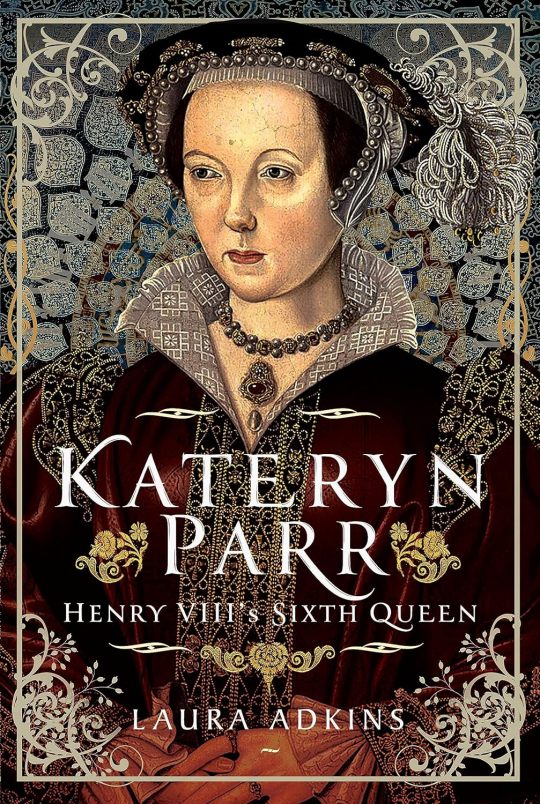

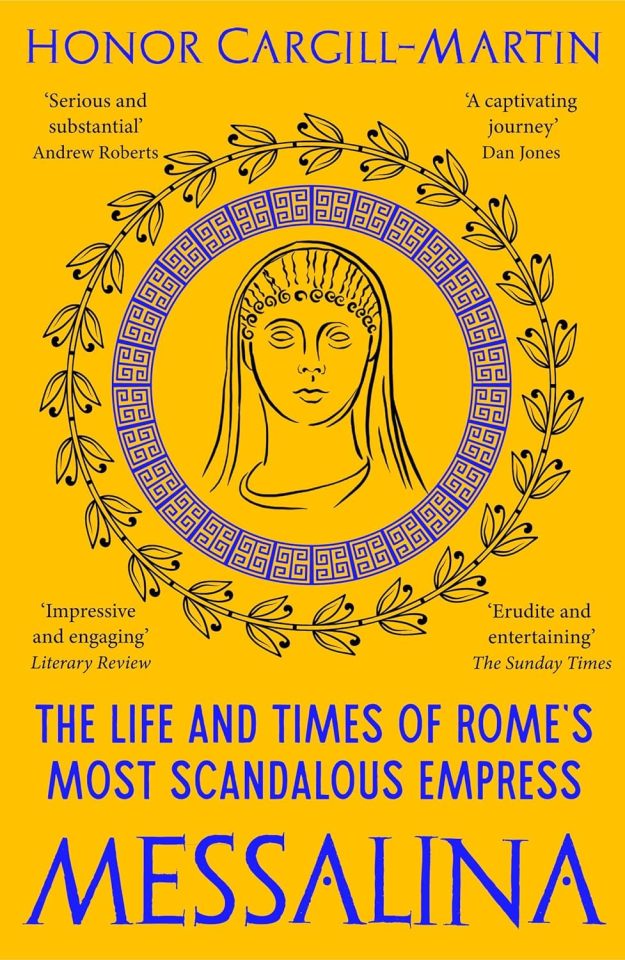
Kateryn Parr: Henry VIII's Sixth Queen by Laura Adkins (Mar. 15, 2024) // Anne Boleyn & Elizabeth I: The Mother and Daughter Who Changed History by Tracy Borman (new paperback version published Mar. 7, 2024) // Messalina: The Life and Times of Rome’s Most Scandalous Empress by Honor Cargill-Martin (Mar. 14, 2024)

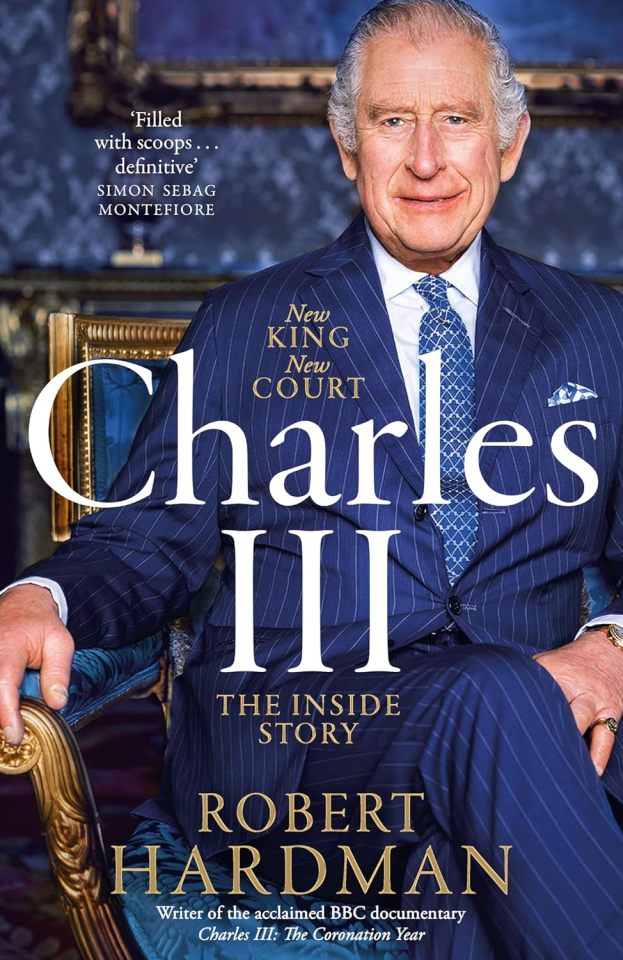
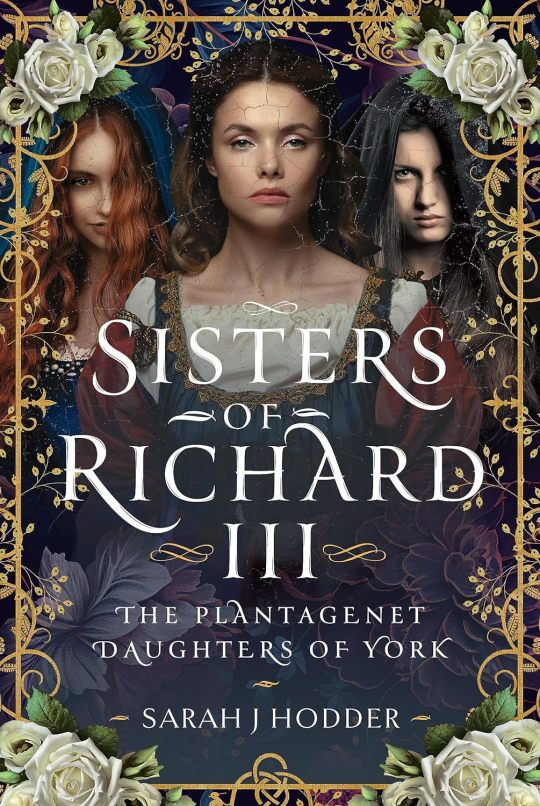
House of Lilies: The Dynasty that Made Medieval France by Justine Firnhaber-Baker (Mar. 28, 2024) // Charles III: New King. New Court. The Inside Story. by Robert Hardman (Jan. 18, 2024) // Sisters of Richard III: The Plantagenet Daughters of York by Sarah J Hodder (Mar. 15, 2024)
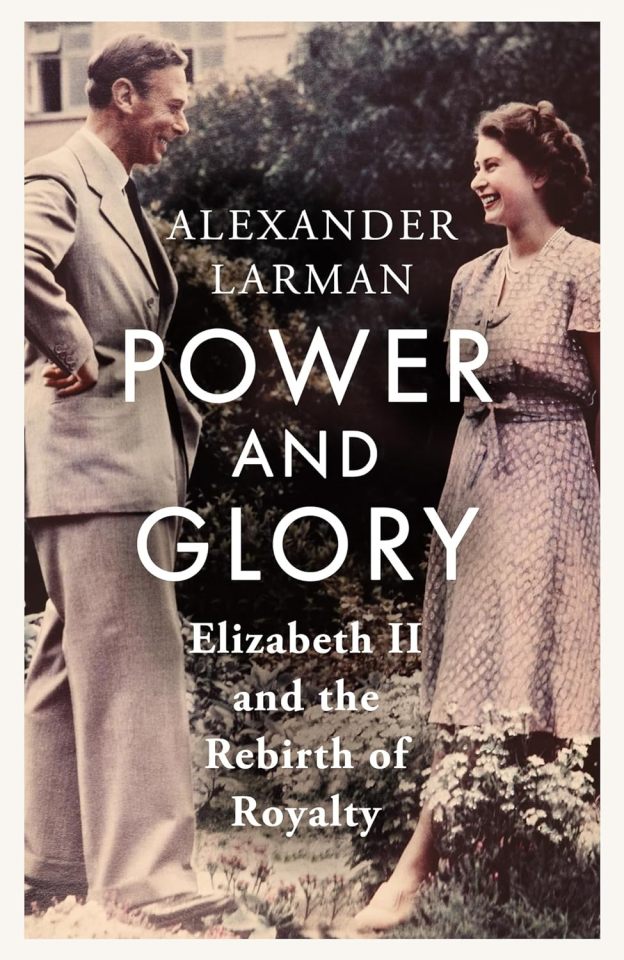
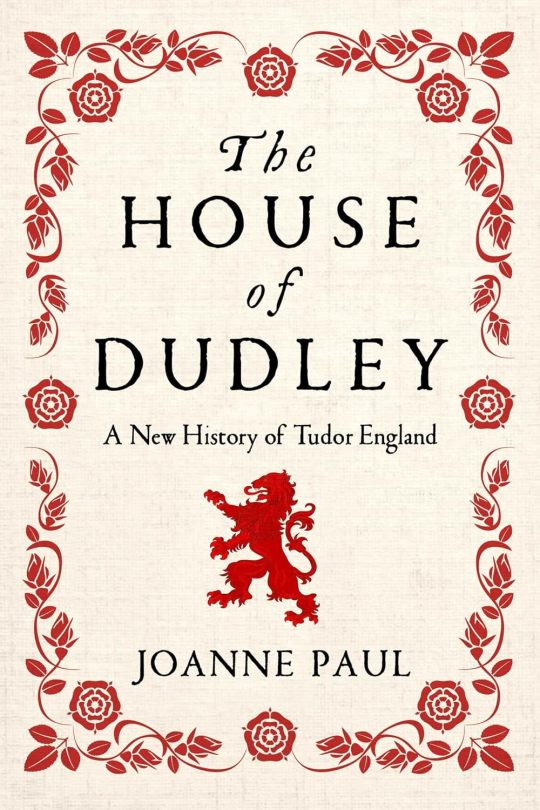
Power and Glory: Elizabeth II and the Rebirth of Royalty by Alexander Larman (Mar. 28, 2024) // The House of Dudley: A New History of Tudor England by Joanne Paul (new paperback version published Jan. 9, 2024)
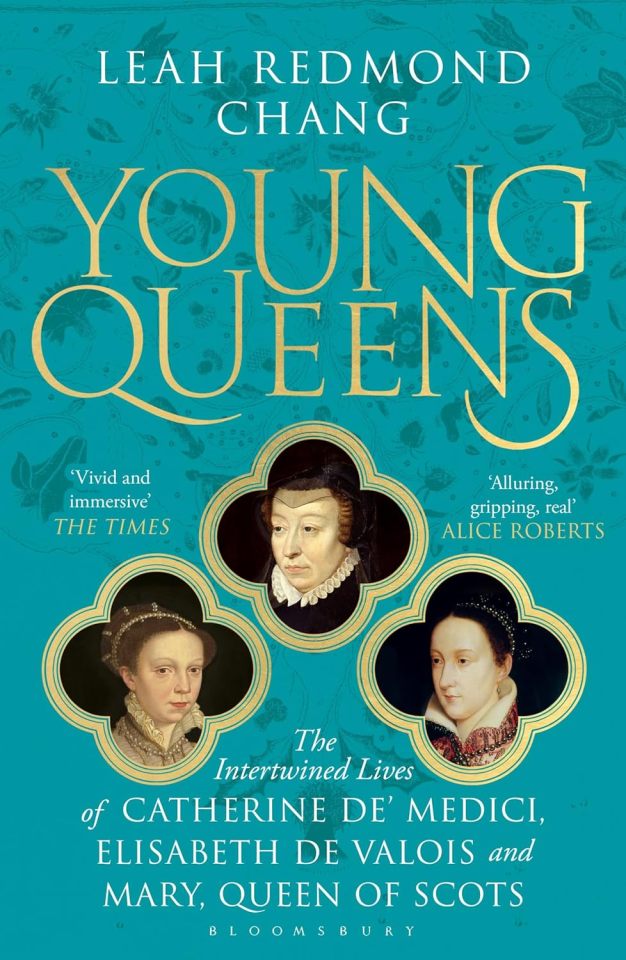
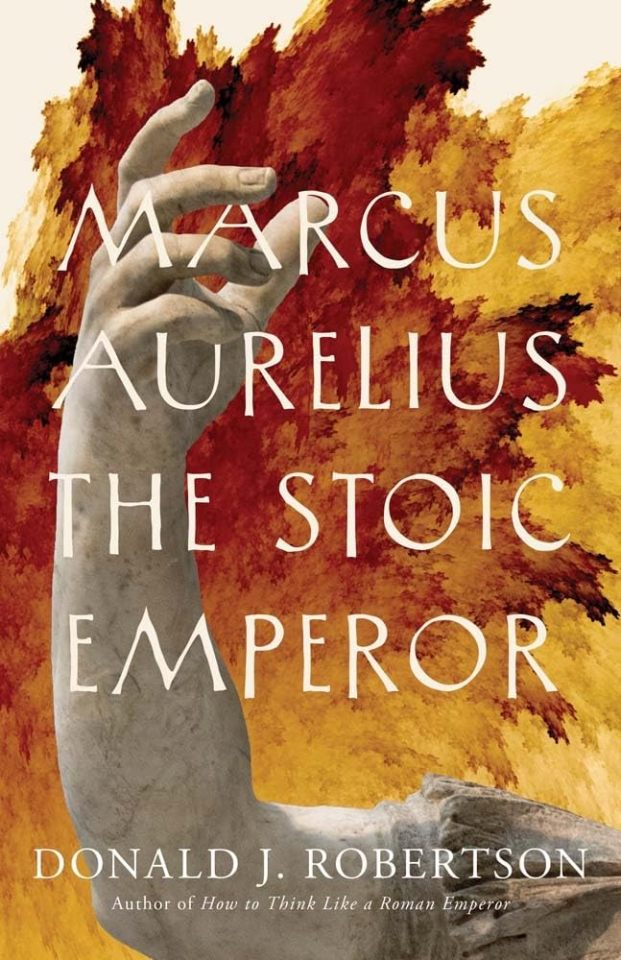
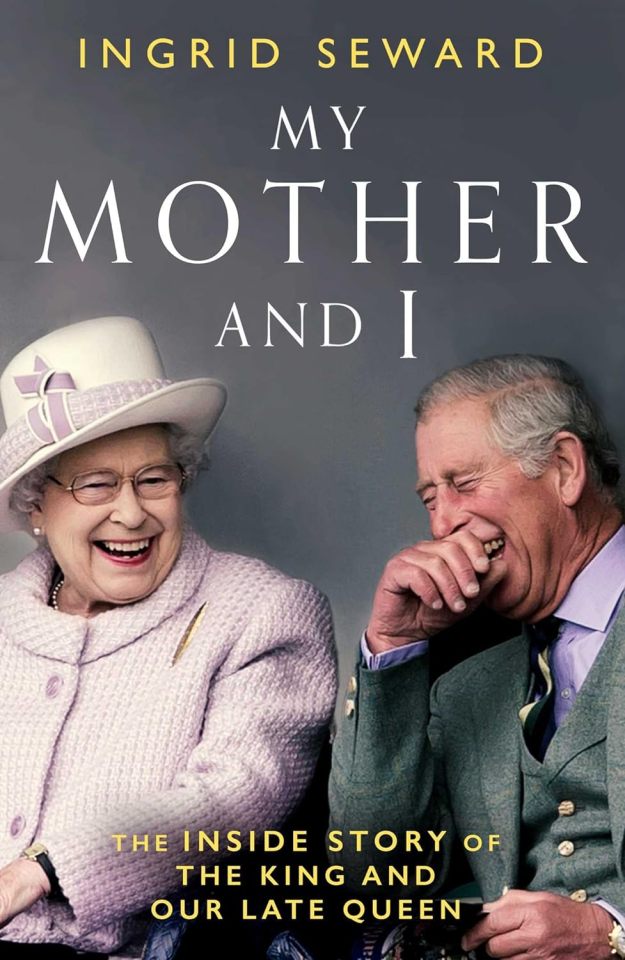
Young Queens: The Intertwined Lives of Catherine De' Medici, Elisabeth de Valois, and Mary, Queen of Scots by Leah Redmond Chang (new paperback version published Feb. 29, 2024) // Marcus Aurelius: The Stoic Emperor by Donald J. Robertson (Mar. 26, 2024) // My Mother and I by Ingrid Seward (Feb. 15, 2024)

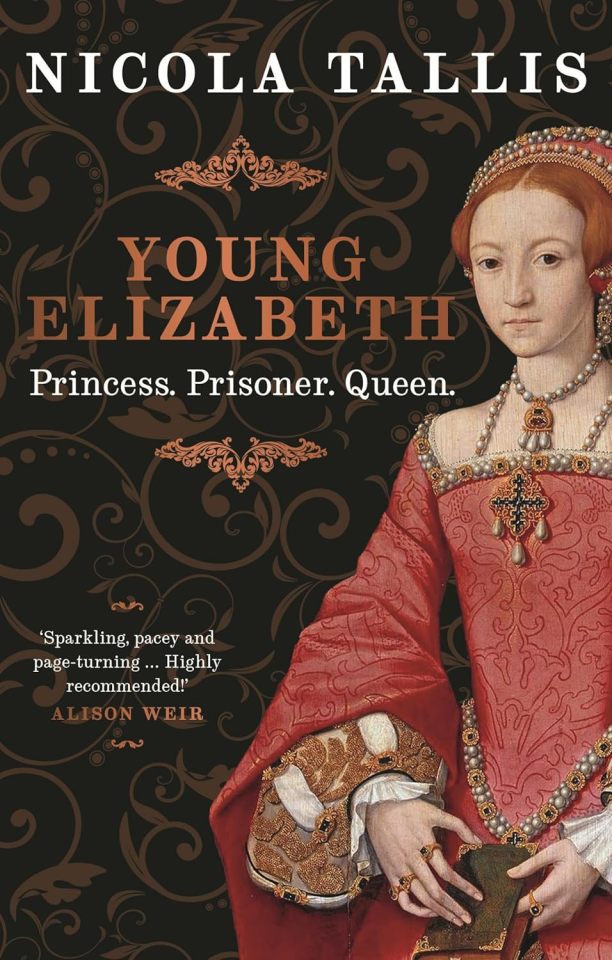
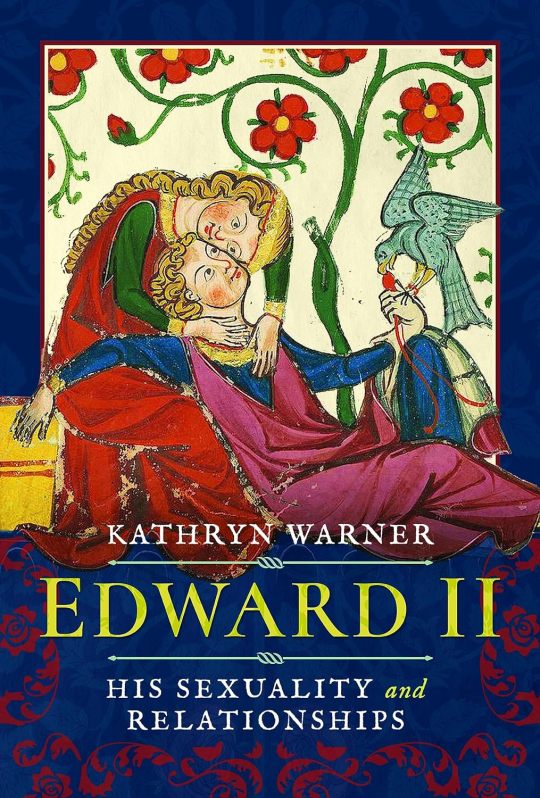
Queen Victoria and her Prime Ministers: A Personal History by Anne Somerset (Mar. 28, 2024) // Young Elizabeth: Princess. Prisoner. Queen. by Nicola Tallis (Feb. 29, 2024) // Edward II: His Sexuality and Relationships by Kathryn Warner (Mar. 15, 2024)
#literature#affiliate links#catherine parr#anne boleyn#elizabeth i#valeria messalina#king charles iii#anne of york#elizabeth of york#margaret of york#queen elizabeth ii#catherine de medici#isabel de valois#mary queen of scots#marcus aurelius#queen victoria#edward ii
28 notes
·
View notes
Text
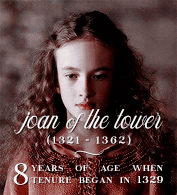


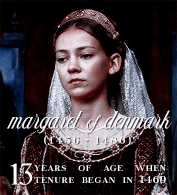
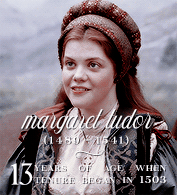

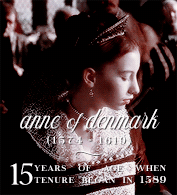
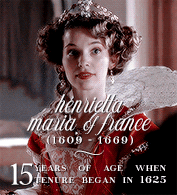
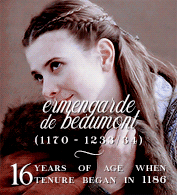

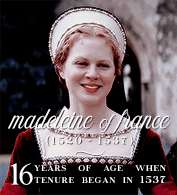

♕ Youngest Queen Consorts (at beginning of tenure)
#historyedit#history#scottish history#kingdom of scotland#house of stewart#house of dunkeld#house of bruce#qc: joan of the tower#qc: joan of england#qc: margaret of england#qc: margaret of denmark#qc: margaret tudor#qc: sybilla of normandy#qc: anne of denmark#qc: henrietta maria of france#qc: ermengarde de beaumont#qc: mary of guelders#qc: madeleine of valois#qc: elizabeth de burgh#ours
321 notes
·
View notes
Text
on 2 April 1546, a scant two years later, Catherine delivered a baby girl just before midnight. This second delivery was difficult, and Catherine was bedridden for weeks afterwards. She recovered in time, though, for the baptism in July, held at Fontainebleau. More than a christening, this baptismal ceremony was a celebration of the recent reconciliation between King Francis and Henry VIII of England after the English king’s assault on Boulogne two years earlier. At Fontainebleau, the guests ogled lavish banners sewn with English and French coats of arms that were hung throughout the palace and admired the French and English heralds who stood trumpeting side by side. At the baptismal font, Thomas Cheney, the English ambassador, cradled the baby in his arms, standing proxy for Henry VIII, who agreed to serve as godfather for this child, just as he had for her father. Henry chose a name for the new princess that was dear to his heart: Elisabeth, after his beloved mother and his own daughter, Elizabeth Tudor, who was twelve years old.
Young Queens: Three Renaissance Women and the Price of Power, Leah Redmond Chang
35 notes
·
View notes
Text




Reign 2013-17/04-01▪︎01×02
Francis and Darnley
#francis de valois#henry darnley#toby regbo#will kemp#reign#season4#season1#face expression#parallels#husbands#dauphin of france#elizabeth tudor#mary stuart#rachel skarsten#adelaide kane#queens#england#scotland#throne#beginning and ending#max richter#Spotify
4 notes
·
View notes
Note
I want to talk about anne neville and Elizabeth of York. I always thought they knew each other very well. They all have vague personalities in the eyes of passers-by, turbulent fates, tragic experiences caused by their father's death, good relations with husbands who have blood feuds indirectly through marriage, and unstable dynasty rule caused by death ... Because of their vague personalities, both women are easily used by historical authors to express their views, and they also have some connections (such as clothes that are often discussed, Elizabeth once had marriage rumors with Edward and Richard in Lancashire ... Their biographies were also criticized by readers as biased (I think this is because these two women are not extroverted, so the author can only imagine themselves ...)I am very frustrated that historical novels mostly use them to shape the men around them, and rarely pay attention to the inner thoughts of "silent" women. I can see some vivid characteristics of these two women in historical literature. One of my favorite facts about Elizabeth of York is that she arranged for her sister to marry her uncle's former supporters, and had a good relationship with the relatives of the Delapol family, which reminded me of her father's attempt to reconcile with Henry Beaufort. Unfortunately, the novels I read do not describe this at all. The marriage between Anne Neville and Richard III is originally described in the novel as Richard saving her, but from her escape from George's supervision, there is reason to believe that they are in a cooperative relationship, as well as Lancaster. Edward, in the novel, is always just an "evil ex husband..." But I think their brief marriage is not so shallow…
I think your frustration with the way Anne Neville and Elizabeth of York are written about is very justified. I'm not very knowledgable about their lives (honestly, I'm a little confused why you sent this to me) but even from a distance, I think they must have been a lot more complex that historians, commentators and novelists typically suppose they were. I think they largely serve as Ricardian mouthpieces now - Anne as Richard III's one true love, tragically lost and Elizabeth as his chief mourner and as another victim of Tudor rule - but it's also very easy to turn them to mouthpieces for Lancaster and Tudor, which was the image that dominated in Tudor times - Shakespeare's depiction of Anne as the chief mourner for Henry VI, the story Richard murdered Anne in order to forcibly marry Elizabeth, the depiction of Elizabeth as purely the idealised, virtuous and dutiful prop for her husband's rule). I think that, because there's a lack of information that lets us build up a more detailed idea of either women, they tend to be written in a way that expresses how the author really feels about the events and personalities of the Wars of the Roses. I can understand this impulse but I wish this impulse was focused more on them as individuals and less on being mouthpieces for the author's feelings about Richard III or Henry VII.
#i feel like both women have always been what their interpreters have wanted them to be#and i get it because like we don't know what mary de bohun#(another example of a 'silent woman' and one known far less than either of these two)#was really like so i write her how i wish her to have been#but i also have feelings about her as an individual and try to understand she's not a stock character#i do see similarities in how eoy is used as a way for ricardians to express grief and anger over r3's death#and how isabelle de valois is used to express their grief and anger over richard ii's deposition and death#except there is actual evidence of isabelle being angry and upset about what happened to richard ii#but the novels where isabelle is perennially in romantic love with richard ii where even on her deathbed she's longing for him...#and wishing she could have been his wife in deed as well as word...#(which honestly creep me tf out given how young she was when he died and how much older than her he was)#all give me big 'eoy being romantically hung up on her uncle and wishing for his incest baby long after his ~tragic death' vibes#asks#anon#long post#anne neville#elizabeth of york#i don't profess to being an expert on the ricardian and tudor phases of the wars of the roses#but i do know what i don't like and its ricardian bullshit or the same old repeated tropes#text posts
5 notes
·
View notes
Photo

Elizabeth Schooling in Ninette de Valois' ballet Bar aux Folies-Bergère, c. 1937
The ballet was created in 1934 after a suggestion by Marie Rambert's husband, Ashley Dukes, who had frequently remarked on the resemblance between Schooling and the barmaid depicted in Manet's famous painting. Despite serving as the inspiration for the ballet, Schooling was initially considered too inexperienced for the part, which was given instead to Pearl Argyle. When Argyle left the company, however, Schooling seized her moment and flawlessly embodied the role, being described in one review as 'an almost exact replica of the wistful blonde lady behind the bar'.
18 notes
·
View notes
Text
Period drama week 2023
Day 2 july 4th
Favorite period drama series
Reign for sure. I know it's highly inaccurate but I love the world they built and the Vibes
#perioddramaweek2023#period drama#reign#mary stuart#mary queen of scots#francis valois#francis de valois#Adelaide kane#torrance coombs#catherine de medici#queen Elizabeth i#lady kenna
4 notes
·
View notes
Text
Maiden, Mother, Crone

Three ladies whose entangled lives changed the history of Europe.
#elizabeth i#elizabeth tudor#mary queen of scots#mary stuart#catherine de medici#the serpent queen#the black queen#the virgin queen#gloriana#tudor era#House of valois#Tudor#Stuart
1 note
·
View note
Text
👑🌹The Queen of Love and Beauty🌹👑
Round 1 (3 of 6)
The Queen of Love and Beauty shall hold the honour of presenting unto the winner of the Tournament his Champion's Coronet.
Vote for the lady who, to you, best exemplifies feminine dignity, grace and loveliness
The six contenders with the most votes will advance.












Row 1
- Lucrezia Borgia [Holliday Grainger], The Borgias (2011-2013)
- Giulia Farnese [Lotte Verbeek], The Borgias (2011-2013)
- Elizabeth de Burgh [Florence Pugh], Outlaw King (2018)
Row 2
- Contessina de Bardi [Annabel Scholey], Medici (2016-2019)
- Elizabeth Woodville [Rebecca Ferguson], The White Queen (2013)
- Mary Boleyn [Charity Wakefield], Wolf Hall (2015-2024)
Row 3
- Anne Neville [Phoebe Fox], The Hollow Crown (2012-2016)
- Kate Percy [Michelle Dockery], The Hollow Crown (2012-2016)
- Margaret of Anjou [Sophie Okonedo], The Hollow Crown (2012-2016)
Row 4
- Eleanore of Aquitane [Katharine Hepburn], The Lion in Winter (1968)
- Isabella of Valois [Emma Hamilton], RSC’s Richard II (2013)
- Anne Boleyn [Genevieve Bujold], Anne of the Thousand Days (1969)
87 notes
·
View notes
Note
hi! so i started reading when christ and his saints slept (your recommendation, it's great btw) and wow george really dropped the ball on the dance cause what is this going on. like older sister against brother?? why would that work George??
i've seen tb make arguments that the usurpation set women's rights back for centuries, and that seems kind of silly cause the rule of (bloody) mary i still led to the rule of elizabeth i. personally, i think the issue of women's rights has more to do with the lack of queen dowagers and regents which are more common in real history but less in asoiaf who use their power of being mothers of the king to advocate for women, and lay the groundwork (e.g. margaret beaufort, nurbanu sultan, anne of austria, etc)
but, also what are the greens meant to do because if viserys did not settle inheritance for his sons (through heiresses) whilst he lived there's no reason why rhaenyra would do it when she's queen.
for me the greens have three options : take the throne through conquest, ask for a great council (they have vhagar they can make demands), or three literally die.
like as much as i am green supporter if i was rhaenyra and i peacefully ascended to the throne and my half-siblings who are brothers with sons of their own well, they just have to die ottoman style, because allowing them cadet branches undermines her own and in the end you get a house bourbon supplanting house valois situation (something catherine de medici committed war crimes to prevent); you can't let them leave because well 6 dragons outside of targaryen control — you might as well be asking for trouble ; send them to the citadel —well two are married to each other, one has vhagar with clear anger issues, the other has tessarion and can just leave when he wants and, not even talking about the kids with their own dragons.
the truth is the greens can't just sit and do nothing. if viserys doesn't want the trouble of his sons ,and wants rhaenyra has queen then simply don't remarry or do you your duty to the sons that you have sired.
reading christ and when his saints slepts its actually comical how house targaryen don't have mistresses and they began to have them when the dragons are dead
this was a long rant but the greens don't have much options especailly cause their living in an environment where sons inherit before daughters. i would ask how would you make the story more compelling and logical causing reading penman the dance is not.
also, big can of your writing ofcir and akab are holding me down since hotd has been feeding us crap.
Anon I've had this reply sitting in my drafts and should have answered ages ago, so my apologies for the late reply!
I'm so glad you're reading When Christ and His Saints Slept. It's my go-to recommendation for historical fiction about the Anarchy, and Penman in general is just my absolute favorite historical fiction writer. I hope you continue the series that follows Matilda's son, Henry II, his wife Eleanor of Aquitaine, and their brood of children.
You're right that the greens didn't have many options if they wanted to stay alive. The show has downplayed that aspect this season but Alicent's sons and grandsons would always be a challenge to Rhaenyra and Jace's rule. You only need a basic understanding of the world to see that they were in an impossible position. Ultimately, Viserys is the one who destabilized his succession and deserves a lot more blame than the show is willing to give him.
As for the matter of powerful women, queens regnant, and women's rights, irl history is full of powerful queen consorts like Eleanor who exercised power, defended garrisons, negotiated peace, and sometimes, as in Eleanor's case, even rebelled against their own husbands. In the Anarchy, Stephen's wife, Matilda of Boulogne, was a force to be reckoned with, besieging Dover castle and making a treaty for Stephen with the king of Scotland. When he was captured in battle, Matilda raised an army, and when her army captured Empress Matilda's half-brother, Robert of Gloucester, who was one of her biggest supporters, Matilda of Boulogne negotiated a hostage exchange and secured Stephen's release. And this isn't even a Westeros problem because we see politically powerful women who are not queens regnant in-world-- Cersei as regent for her children, Catelyn, who was basically running the war effort before Robb set her aside, and even book!Alicent, who exercised a good deal of power. In fact, somewhat ironically, show!Alicent was well set up to exercise even more power than her book counterpart. It's clear Aegon actually listened to her and valued her counsel, even seeking out her advice and guidance. Having the ear of the king is no small thing, and if she'd done anything other than belittle him she could have ended up as his most trusted advisor. Look how easily Larys moved in! But the show instead had Alicent alienate Aegon and then treated her disempowerment as if it were a function of her gender rather than a result of her inability to provide useful counsel.
So no, a lack of queens regnant is not keeping Westerosi women out of powerful positions, and you're right anon, in that HotD seems to have decided that powerful women didn't exist as consorts, dowagers, and regents even though that's not true irl or in Westeros. As for women's rights, unfortunately having a queen regnant historically has done very little for women as a whole. Royal women tended to align their interests with other royals or nobles rather than with women as a whole, that is, solidarity is formed along class lines more often than it is formed along gendered lines. We see this even in our world today, where companies with women as CEOs in fact tend to hire fewer women in lower management positions. Rhaenyra being denied the throne doesn't mean much for the average Westerosi woman, but civil wars caused by an unstable succession can make everyone's lives demonstrably worse.
68 notes
·
View notes
Text
Below the cut I have made a list of each English and British monarch, the age of their mothers at their births, and which number pregnancy they were the result of. Particularly before the early modern era, the perception of Queens and childbearing is quite skewed, which prompted me to make this list. I started with William I as the Anglo-Saxon kings didn’t have enough information for this list.
House of Normandy
William I (b. c.1028)
Son of Herleva (b. c.1003)
First pregnancy.
Approx age 25 at birth.
William II (b. c.1057/60)
Son of Matilda of Flanders (b. c.1031)
Third pregnancy at minimum, although exact birth order is unclear.
Approx age 26/29 at birth.
Henry I (b. c.1068)
Son of Matilda of Flanders (b. c.1031)
Fourth pregnancy at minimum, more likely eighth or ninth, although exact birth order is unclear.
Approx age 37 at birth.
Matilda (b. 7 Feb 1102)
Daughter of Matilda of Scotland (b. c.1080)
First pregnancy, possibly second.
Approx age 22 at birth.
Stephen (b. c.1092/6)
Son of Adela of Normandy (b. c.1067)
Fifth pregnancy, although exact birth order is uncertain.
Approx age 25/29 at birth.
Henry II (b. 5 Mar 1133)
Son of Empress Matilda (b. 7 Feb 1102)
First pregnancy.
Age 31 at birth.
Richard I (b. 8 Sep 1157)
Son of Eleanor of Aquitaine (b. c.1122)
Sixth pregnancy.
Approx age 35 at birth.
John (b. 24 Dec 1166)
Son of Eleanor of Aquitaine (b. c.1122)
Tenth pregnancy.
Approx age 44 at birth.
House of Plantagenet
Henry III (b. 1 Oct 1207)
Son of Isabella of Angoulême (b. c.1186/88)
First pregnancy.
Approx age 19/21 at birth.
Edward I (b. 17 Jun 1239)
Son of Eleanor of Provence (b. c.1223)
First pregnancy.
Age approx 16 at birth.
Edward II (b. 25 Apr 1284)
Son of Eleanor of Castile (b. c.1241)
Sixteenth pregnancy.
Approx age 43 at birth.
Edward III (b. 13 Nov 1312)
Son of Isabella of France (b. c.1295)
First pregnancy.
Approx age 17 at birth.
Richard II (b. 6 Jan 1367)
Son of Joan of Kent (b. 29 Sep 1326/7)
Seventh pregnancy.
Approx age 39/40 at birth.
House of Lancaster
Henry IV (b. c.Apr 1367)
Son of Blanche of Lancaster (b. 25 Mar 1342)
Sixth pregnancy.
Approx age 25 at birth.
Henry V (b. 16 Sep 1386)
Son of Mary de Bohun (b. c.1369/70)
First pregnancy.
Approx age 16/17 at birth.
Henry VI (b. 6 Dec 1421)
Son of Catherine of Valois (b. 27 Oct 1401)
First pregnancy.
Age 20 at birth.
House of York
Edward IV (b. 28 Apr 1442)
Son of Cecily Neville (b. 3 May 1415)
Third pregnancy.
Age 26 at birth.
Edward V (b. 2 Nov 1470)
Son of Elizabeth Woodville (b. c.1437)
Sixth pregnancy.
Approx age 33 at birth.
Richard III (b. 2 Oct 1452)
Son of Cecily Neville (b. 3 May 1415)
Eleventh pregnancy.
Age 37 at birth.
House of Tudor
Henry VII (b. 28 Jan 1457)
Son of Margaret Beaufort (b. 31 May 1443)
First pregnancy.
Age 13 at birth.
Henry VIII (b. 28 Jun 1491)
Son of Elizabeth of York (b. 11 Feb 1466)
Third pregnancy.
Age 25 at birth.
Edward VI (b. 12 Oct 1537)
Son of Jane Seymour (b. c.1509)
First pregnancy.
Approx age 28 at birth.
Jane (b. c.1537)
Daughter of Frances Brandon (b. 16 Jul 1517)
Third pregnancy.
Approx age 20 at birth.
Mary I (b. 18 Feb 1516)
Daughter of Catherine of Aragon (b. 16 Dec 1485)
Fifth pregnancy.
Age 30 at birth.
Elizabeth I (b. 7 Sep 1533)
Daughter of Anne Boleyn (b. c.1501/7)
First pregnancy.
Approx age 26/32 at birth.
House of Stuart
James I (b. 19 Jun 1566)
Son of Mary I of Scotland (b. 8 Dec 1542)
First pregnancy.
Age 23 at birth.
Charles I (b. 19 Nov 1600)
Son of Anne of Denmark (b. 12 Dec 1574)
Fifth pregnancy.
Age 25 at birth.
Charles II (b. 29 May 1630)
Son of Henrietta Maria of France (b. 25 Nov 1609)
Second pregnancy.
Age 20 at birth.
James II (14 Oct 1633)
Son of Henrietta Maria of France (b. 25 Nov 1609)
Fourth pregnancy.
Age 23 at birth.
William III (b. 4 Nov 1650)
Son of Mary, Princess Royal (b. 4 Nov 1631)
Second pregnancy.
Age 19 at birth.
Mary II (b. 30 Apr 1662)
Daughter of Anne Hyde (b. 12 Mar 1637)
Second pregnancy.
Age 25 at birth.
Anne (b. 6 Feb 1665)
Daughter of Anne Hyde (b. 12 Mar 1637)
Fourth pregnancy.
Age 27 at birth.
House of Hanover
George I (b. 28 May 1660)
Son of Sophia of the Palatinate (b. 14 Oct 1630)
First pregnancy.
Age 30 at birth.
George II (b. 9 Nov 1683)
Son of Sophia Dorothea of Celle (b. 15 Sep 1666)
First pregnancy.
Age 17 at birth.
George III (b. 4 Jun 1738)
Son of Augusta of Saxe-Gotha (b. 30 Nov 1719)
Second pregnancy.
Age 18 at birth.
George IV (b. 12 Aug 1762)
Son of Charlotte of Mecklenburg-Strelitz (b. 19 May 1744)
First pregnancy.
Age 18 at birth.
William IV (b. 21 Aug 1765)
Son of Charlotte of Mecklenburg-Strelitz (b. 19 May 1744)
Third pregnancy.
Age 21 at birth.
Victoria (b. 24 May 1819)
Daughter of Victoria of Saxe-Coburg-Saafield (b. 17 Aug 1786)
Third pregnancy.
Age 32 at birth.
Edward VII (b. 9 Nov 1841)
Daughter of Victoria of the United Kingdom (b. 24 May 1819)
Second pregnancy.
Age 22 at birth.
House of Windsor
George V (b. 3 Jun 1865)
Son of Alexandra of Denmark (b. 1 Dec 1844)
Second pregnancy.
Age 20 at birth.
Edward VIII (b. 23 Jun 1894)
Son of Mary of Teck (b. 26 May 1867)
First pregnancy.
Age 27 at birth.
George VI (b. 14 Dec 1895)
Son of Mary of Teck (b. 26 May 1867)
Second pregnancy.
Age 28 at birth.
Elizabeth II (b. 21 Apr 1926)
Daughter of Elizabeth Bowes-Lyon (b. 4 Aug 1900)
First pregnancy.
Age 25 at birth.
Charles III (b. 14 Nov 1948)
Son of Elizabeth II of the United Kingdom (b. 21 Apr 1926)
First pregnancy.
Age 22 at birth.
377 notes
·
View notes
Text










Women’s History Meme || Empresses (2/5)
↬ Catherine de Valois-Courtenay (before 15 April 1303 – October 1346)
The official Neapolitan investigation into Andrew of Hungary’s murder targeted Johanna’s closest supporters and left her isolated and vulnerable. Her aunt, Catherine of Valois, took advantage of that vulnerability to become the queen’s confidant in order to make certain that one of her sons would be Naples’s next king. At first, it appeared that this son would be Robert, the eldest of the Tarantini, who for a time seemed to be winning the competition between the Angevin princes for power and whom Johanna requested a papal dispensation to marry. Soon, however, Louis gained the upper hand, and Johanna’s requests for dispensations began to identify him as her intended.
— From She-Wolf to Martyr: The Reign and Disputed Reputation of Johanna I of Naples by Elizabeth Casteen
Of the many relatives who chose to avail themselves of the glittering social whirl of the capital, one stood out: Joanna’s aunt, Catherine of Valois, widow of Robert the Wise’s younger brother Philip, prince of Taranto. Catherine was Joanna’s mother’s older half-sister (both were fathered by Charles of Valois). Catherine had married Philip in 1313, when Philip was thirty-five and she just ten. Catherine was Philip’s second wife. He had divorced his first on a trumped-up charge of adultery after fifteen years of marriage and six children in order to wed Catherine, who had something he wanted. She was the sole heir to the title of empress of Constantinople.
… Catherine was twenty-eight years old, recently widowed, and a force to be reckoned with when the newly orphaned Joanna and her sister, Maria, first knew her at the Castel Nuovo in 1331. Shrewd, highly intelligent, and vital, Catherine was supremely conscious of her exalted ancestry and wore her title of empress of Constantinople as though it were a rare gem of mythic origin. Even the death of her husband, Philip, in 1331 had not dissuaded her from persisting in her efforts to reclaim the Latin Empire for herself and her three young sons: Robert, Louis, and Philip. A series of shockingly inept leaders had left the Byzantine Empire vulnerable to attack from the west, and this state of affairs was well known in Italy. Moreover, Catherine was used to getting her way.
— The Lady Queen: The Notorious Reign of Joanna I, Queen of Naples, Jerusalem, and Sicily by Nancy Goldstone
#women's history meme#historyedit#catherine of valois#house of valois#capetian house of anjou#medieval#french history#italian history#european history#women's history#history#nanshe's graphics
35 notes
·
View notes
Text
In case anyone is interested, here are some of the historical ships I am more than willing to write:
HOUSE OF TUDOR:
-Henry VII & Elizabeth of York.
-Arthur Tudor & Catherine of Aragon.
-Mary Tudor & Louis XII // Charles Brandon, 1st Duke of Suffolk.
(And no, I would rather not receive any Henry VIII related stuff)
HOUSE OF HAPSBURG:
-Maximilian I & Mary of Burgundy // Bianca Maria Sforza (pretty please, ask me to write about this two).
-Charles V & Isabella of Portugal.
HOUSE OF BURGUNDY - VALOIS:
-Philip the Good & Isabella of Portugal.
-Charles Martin (Charles “the Bold”) & Isabelle de Bourbon // Margaret of York.
HOUSE OF AVIS:
-Manuel I & Maria of Aragon.
HOUSE OF YORK:
-Richard of Conisburgh & Anne Mortimer.
-Richard of York & Cecily Neville.
-George of Clarence & Isabel Neville.
HOUSE OF LANCASTER:
-Henry VI & Catherine of France.
-Henry VII & Margaret of Anjou.
OTHERS:
-Matthias Corvinus & Beatrice of Naples.
-Yolande of France & Amadeo IX of Savoy.
-Anne of Brittany & Maximilian I // Louis XII
( This may interest you @catherinemybeloved / @dickon777 )
11 notes
·
View notes
Note
The Tudor chest- who has a podcast with some historians that come on, on Instagram said Elizabeth woodville was a commoner who captured the kings heart. Is this true?
The whole 'commoner' thing bugs me because, in absolutely every sense of the word, Elizabeth Woodville was not a commoner. She was, on her father's side, the daughter of a well-known and quite celebrated knight who fought alongside some of the top brass during the early part of Henry VI's reign. Her father also held a high position in the household of John duke of Bedford, uncle to Henry VI and the English regent in France. His family had held lands in Northamptonshire for more than a century and several of his ancestors had served as sheriff. Which is all to say that the Woodville family, while not amongst the highest echelons of nobility, were firmly part of the landed gentry.
And that doesn't even take into account Elizabeth's mother, Jacquetta de St. Pol, whose father was a liegeman of the dukes of Burgundy, and whose extended family had married into both the French and the Burgundian royal families. She was also married, for several years, to the aforementioned John duke of Bedford, which made her the literal second lady in England after the dowager queen Catherine of Valois. After Bedford's death, she scandalously married Richard Woodville, but it is worth keeping in mind that she continued to style herself Duchess of Bedford until her death.
So, no, Elizabeth Woodville was not in any sense a commoner. A lot of that rhetoric comes from anti-Woodville propaganda spread first by Richard earl of Warwick, and eventually picked up by George of Clarence and Richard of Gloucester (later Richard III), from whence it made its way into the official Tudor historiography of the civil wars.
#england#wars of the roses#elizabeth woodville#jacquetta de st pol#richard woodville#john duke of bedford
37 notes
·
View notes